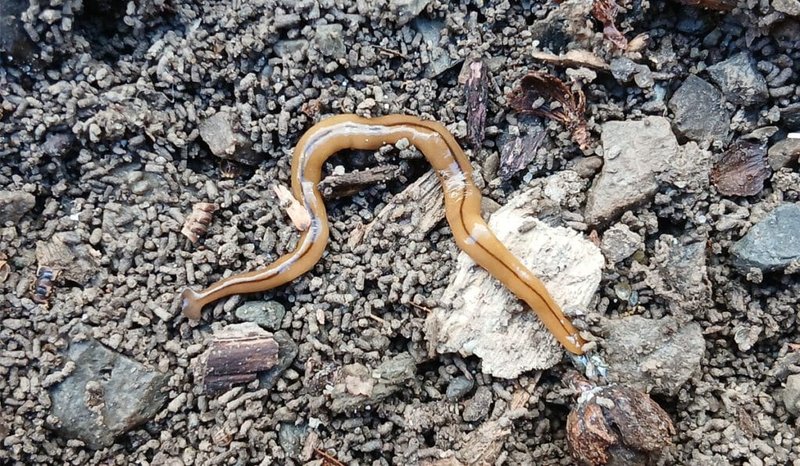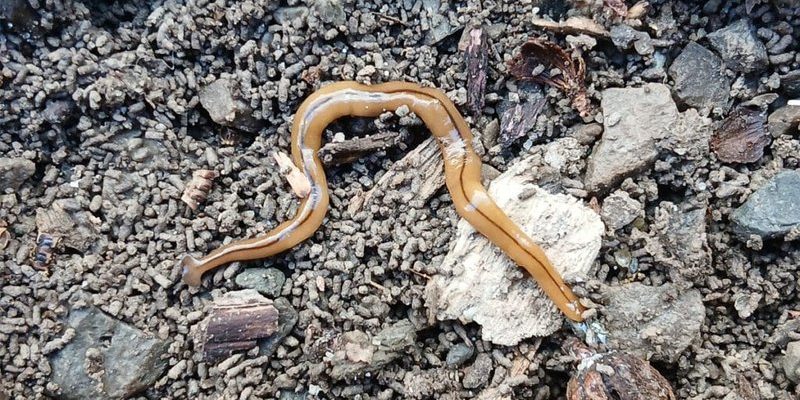
So, what’s the difference between native and invasive hammerhead worms? Let’s dig into it. Native hammerhead worms are like the locals who’ve lived in your neighborhood for generations; they’re perfectly adapted to their environment and play a big role in maintaining balance. On the flip side, invasive hammerhead worms are like those party crashers who take over the buffet and hog the limelight. They can cause problems by disrupting the local ecosystem. You might be wondering why this matters. Well, understanding these two types can help us protect our gardens and natural spaces from unwanted invasions.
What Are Hammerhead Worms?
Before we dive deeper into the native vs. invasive debate, let’s take a moment to understand what hammerhead worms actually are. Belonging to the **Bipalium** genus, these worms are named for their unique head shape, which resembles a hammer or a spade. They come in vibrant colors, ranging from brown and gray to bright yellow or green, making them quite the eye-catching critters.
Most notably, hammerhead worms can grow pretty large—sometimes up to a foot long! They’re mostly found in warm, tropical climates, though some species have made their way to non-tropical areas due to their adaptability. Now, their primary diet consists of *earthworms*, which might sound harmless enough, but it can become a problem for local ecosystems. With that in mind, let’s explore the characteristics of native hammerhead worms.
Native Hammerhead Worm Species
Native hammerhead worms are the original inhabitants of their respective ecosystems. In the United States, for example, you might find the **Bipalium adventitium**, which is known to have certain benefits for the soil. Since they’ve co-evolved with local flora and fauna, they help maintain a balanced ecosystem. They feed on pests and dead organic matter, doing the dirty work that allows plants and animals to thrive.
Their presence in the environment means that other creatures, like birds and small mammals, recognize them as a food source. Here’s the thing: when you have native species around, they help sustain the local food web. This is crucial because when one part of the ecosystem thrives, it often leads to healthier plants, animals, and even soil quality. It’s a win-win for everyone involved.
They may not be flashy or overbearing in their presence, but these native hammerhead worms play a role that’s essential for ecological stability. The more we learn about them, the better we understand how interconnected everything is.
Invasive Hammerhead Worm Species
Now, let’s talk about the troublemakers: invasive hammerhead worms. These are species that have been introduced to areas outside their native range, often due to human activity like gardening, soil transport, or landscaping. One of the most well-known invasive species is the **Bipalium kewense**, which has rapidly expanded its territory in North America.
The trouble with invasive hammerhead worms is their voracious appetite for earthworms, which can be detrimental to local ecosystems. When they eat up the earthworm population, it disrupts the soil’s health and structure. Earthworms play a vital role in aerating the soil, helping water and nutrients reach plants. So, when these invasive worms take over, it can lead to a decline in soil quality, impacting everything from plants to larger wildlife that depend on healthy soil.
In addition to their appetite, invasive hammerhead worms reproduce quickly, making it hard to control their population. As they spread, they can outcompete native species for resources and space, further threatening the local ecosystem. This is why understanding the difference between native and invasive species is so important.
Identifying Native and Invasive Hammerhead Worms
Identifying whether a hammerhead worm is native or invasive can be tricky, but it’s crucial to know who’s who in your garden. Here are some key features to look for:
- Color and Size: Native hammerhead worms often have duller colors and can vary in size, while invasive species like Bipalium kewense tend to be larger and more vibrantly colored.
- Head Shape: While both types have the characteristic hammerhead shape, invasive species may have a more pronounced head that looks broader.
- Behavior: Native species tend to be more docile, while invasive species are often more aggressive. If you notice a worm aggressively moving or eating earthworms in abundance, it could be a sign of an invader.
If you’re uncertain, take a photo and search online or consult local experts. Knowing what you have in your garden is essential for maintaining the balance of your ecosystem.
The Impact of Invasive Hammerhead Worms
The invasion of hammerhead worms can have far-reaching consequences. Not only do they disrupt local earthworm populations, but they also impact the entire food web. Here’s how:
1. **Soil Health**: As previously mentioned, earthworms improve soil aeration and nutrient cycling. When invasive hammerhead worms decimate local earthworm populations, it can lead to compacted soil and poor plant growth.
2. **Plant Life**: Healthy plants depend on a thriving soil ecosystem. With fewer earthworms, you might notice your plants struggling to grow, turning yellow, or dying altogether due to nutrient depletion.
3. **Wildlife**: Birds and other animals that rely on earthworms as a food source will have a tougher time finding enough to eat. This can impact their health and numbers, creating a ripple effect throughout the ecosystem.
In short, the introduction of invasive hammerhead worms can lead to a decline in biodiversity, making the environment less resilient to other changes, like climate shifts and land development.
How to Manage Hammerhead Worm Populations
If you suspect you have invasive hammerhead worms in your garden, don’t panic! There are steps you can take to manage their population. Here’s how:
1. **Manual Removal**: If you find a hammerhead worm, wear gloves and manually remove it from your garden. Place it in a sealed container and dispose of it away from your property.
2. **Improve Soil Conditions**: By enhancing soil health, you can support native earthworm populations. Composting, using natural fertilizers, and practicing crop rotation can help boost the earthworm community that invasive species threaten.
3. **Educate Others**: Share what you learn with your neighbors and gardening community. The more people who understand which species to look for, the better chance we have to protect our ecosystems.
4. **Avoid Soil Transport**: Be cautious about moving soil or compost that might carry invasive hammerhead worms. When starting a new garden, always source materials from reputable suppliers.
Managing hammerhead worm populations is all about being proactive. By understanding the differences and taking action, you can create a thriving garden ecosystem.
Navigating the world of hammerhead worms can feel a bit like walking a tightrope. On one side, you’ve got the valuable native species that contribute to a healthy ecosystem, and on the other, invasive species that can wreak havoc. By grasping the differences between them, we can actively protect our local environments.
Remember, the next time you spot a hammerhead worm, take a moment to identify it carefully. Who knows, you might just be helping to preserve the balance in your garden. So, keep your eyes peeled, share what you know, and don’t hesitate to reach out to local experts if you need more guidance. Together, we can ensure our ecosystems stay healthy and vibrant!

